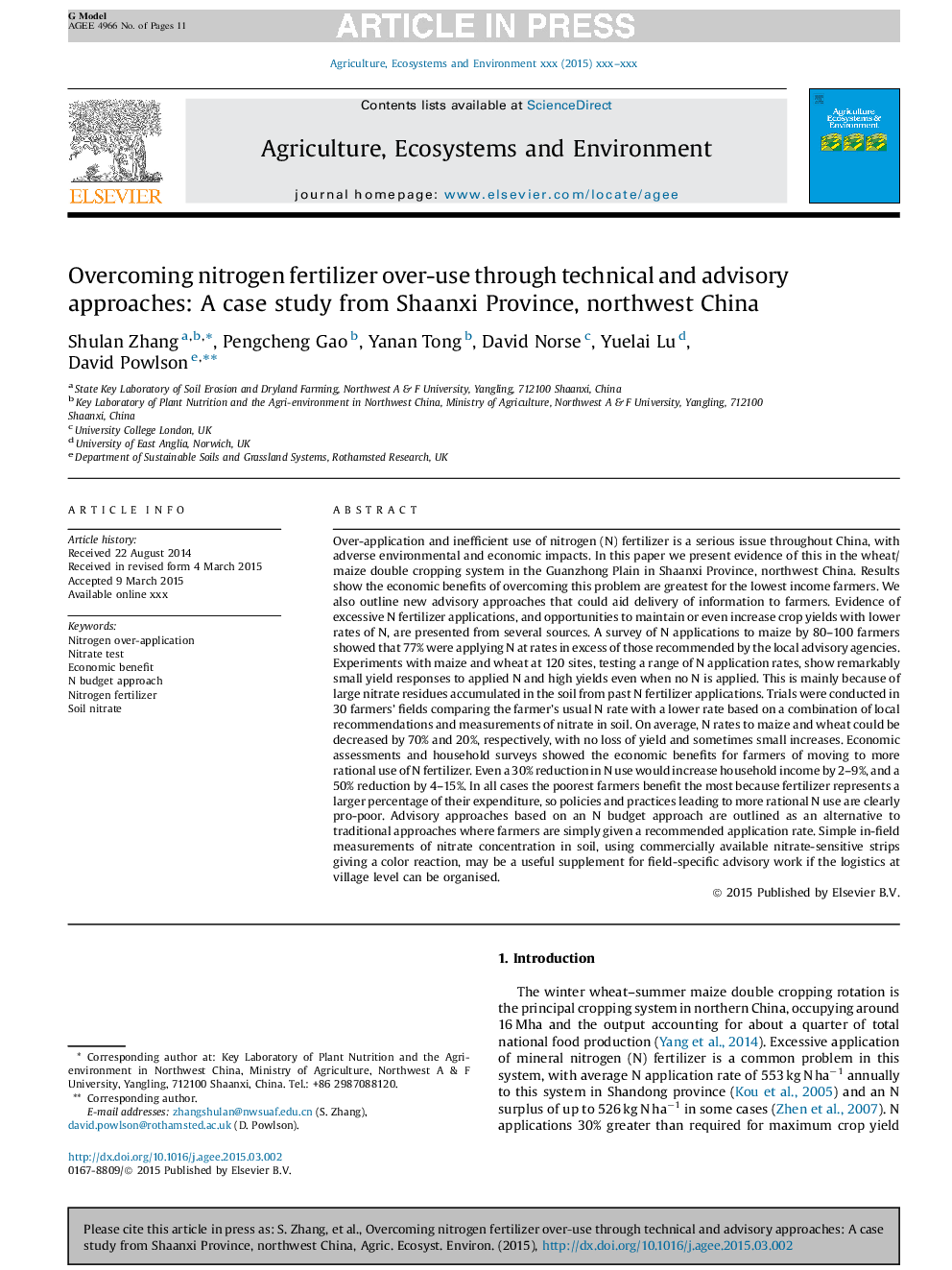| کد مقاله | کد نشریه | سال انتشار | مقاله انگلیسی | نسخه تمام متن |
|---|---|---|---|---|
| 8487692 | 1552043 | 2015 | 11 صفحه PDF | دانلود رایگان |
عنوان انگلیسی مقاله ISI
Overcoming nitrogen fertilizer over-use through technical and advisory approaches: A case study from Shaanxi Province, northwest China
ترجمه فارسی عنوان
غلبه بر کود نیتروژن بیش از حد از طریق روش های فنی و مشاوره ای: مطالعه موردی از استان شانشی، شمال غربی چین
دانلود مقاله + سفارش ترجمه
دانلود مقاله ISI انگلیسی
رایگان برای ایرانیان
کلمات کلیدی
موضوعات مرتبط
علوم زیستی و بیوفناوری
علوم کشاورزی و بیولوژیک
علوم زراعت و اصلاح نباتات
چکیده انگلیسی
Over-application and inefficient use of nitrogen (N) fertilizer is a serious issue throughout China, with adverse environmental and economic impacts. In this paper we present evidence of this in the wheat/maize double cropping system in the Guanzhong Plain in Shaanxi Province, northwest China. Results show the economic benefits of overcoming this problem are greatest for the lowest income farmers. We also outline new advisory approaches that could aid delivery of information to farmers. Evidence of excessive N fertilizer applications, and opportunities to maintain or even increase crop yields with lower rates of N, are presented from several sources. A survey of N applications to maize by 80-100 farmers showed that 77% were applying N at rates in excess of those recommended by the local advisory agencies. Experiments with maize and wheat at 120 sites, testing a range of N application rates, show remarkably small yield responses to applied N and high yields even when no N is applied. This is mainly because of large nitrate residues accumulated in the soil from past N fertilizer applications. Trials were conducted in 30 farmers' fields comparing the farmer's usual N rate with a lower rate based on a combination of local recommendations and measurements of nitrate in soil. On average, N rates to maize and wheat could be decreased by 70% and 20%, respectively, with no loss of yield and sometimes small increases. Economic assessments and household surveys showed the economic benefits for farmers of moving to more rational use of N fertilizer. Even a 30% reduction in N use would increase household income by 2-9%, and a 50% reduction by 4-15%. In all cases the poorest farmers benefit the most because fertilizer represents a larger percentage of their expenditure, so policies and practices leading to more rational N use are clearly pro-poor. Advisory approaches based on an N budget approach are outlined as an alternative to traditional approaches where farmers are simply given a recommended application rate. Simple in-field measurements of nitrate concentration in soil, using commercially available nitrate-sensitive strips giving a color reaction, may be a useful supplement for field-specific advisory work if the logistics at village level can be organised.
ناشر
Database: Elsevier - ScienceDirect (ساینس دایرکت)
Journal: Agriculture, Ecosystems & Environment - Volume 209, 1 November 2015, Pages 89-99
Journal: Agriculture, Ecosystems & Environment - Volume 209, 1 November 2015, Pages 89-99
نویسندگان
Shulan Zhang, Pengcheng Gao, Yanan Tong, David Norse, Yuelai Lu, David Powlson,
